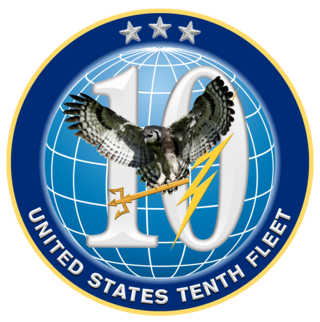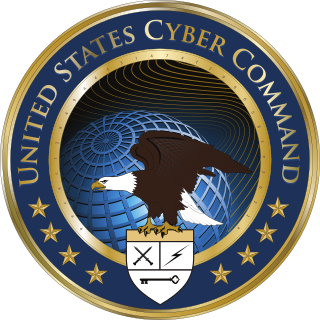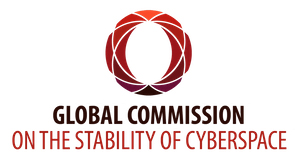Mapping networks of broadband cables
| Part of a series on |
| Geography |
|---|
 |
Cyber geography is mapping the physical network of broadband cables. [1] [2]
| Part of a series on |
| Geography |
|---|
 |
Cyber geography is mapping the physical network of broadband cables. [1] [2]
While servers, routers, cables, and other physical equipment and infrastructure that enable the Internet can be located, the location of each of these hardware modules does not convey the nature of cyberspace. [3] Cyber geography addresses the degree of complexity of this infrastructure. One of the earliest endeavors that investigated the "spatiality" of cyberspace was the research conducted by Martin Dodge at the University of Manchester between 1997 and 2004. Dodge identified "electronic places" that exist behind the computer screen as part of such geography. [4] "Space" in this case is said to be produced or reproduced through social relations and that it is both geographic and cyber as well as a relational concept. [5]

Cyberspace is an interconnected digital environment. It is a type of virtual world popularized with the rise of the Internet. The term entered popular culture from science fiction and the arts but is now used by technology strategists, security professionals, governments, military and industry leaders and entrepreneurs to describe the domain of the global technology environment, commonly defined as standing for the global network of interdependent information technology infrastructures, telecommunications networks and computer processing systems. Others consider cyberspace to be just a notional environment in which communication over computer networks occurs. The word became popular in the 1990s when the use of the Internet, networking, and digital communication were all growing dramatically; the term cyberspace was able to represent the many new ideas and phenomena that were emerging. As a social experience, individuals can interact, exchange ideas, share information, provide social support, conduct business, direct actions, create artistic media, play games, engage in political discussion, and so on, using this global network. Cyberspace users are sometimes referred to as cybernauts.
Information warfare (IW) is the battlespace use and management of information and communication technology (ICT) in pursuit of a competitive advantage over an opponent. It is different from cyberwarfare that attacks computers, software, and command control systems. Information warfare is the manipulation of information trusted by a target without the target's awareness so that the target will make decisions against their interest but in the interest of the one conducting information warfare. As a result, it is not clear when information warfare begins, ends, and how strong or destructive it is.
Cyberterrorism is the use of the Internet to conduct violent acts that result in, or threaten, the loss of life or significant bodily harm, in order to achieve political or ideological gains through threat or intimidation. Emerging alongside the development of information technology, cyberterrorism involves acts of deliberate, large-scale disruption of computer networks, especially of personal computers attached to the Internet by means of tools such as computer viruses, computer worms, phishing, malicious software, hardware methods, and programming scripts can all be forms of internet terrorism. Some authors opt for a very narrow definition of cyberterrorism, relating to deployment by known terrorist organizations of disruption attacks against information systems for the primary purpose of creating alarm, panic, or physical disruption. Other authors prefer a broader definition, which includes cybercrime. Participating in a cyberattack affects the terror threat perception, even if it isn't done with a violent approach. By some definitions, it might be difficult to distinguish which instances of online activities are cyberterrorism or cybercrime.

Cyberwarfare is the use of cyber attacks against an enemy state, causing comparable harm to actual warfare and/or disrupting vital computer systems. Some intended outcomes could be espionage, sabotage, propaganda, manipulation or economic warfare.
The Information and Communications Laboratory (ICL) is one of eight labs in the Georgia Tech Research Institute. Along with the GTRI Cyber Technology and Information Security Laboratory, it is part of the Information and Cyber Sciences directorate. It conducts a broad range of research in areas of computer science, information technology, communications, networking, and the development of commercial products from university research.

Command and control is a "set of organizational and technical attributes and processes ... [that] employs human, physical, and information resources to solve problems and accomplish missions" to achieve the goals of an organization or enterprise, according to a 2015 definition by military scientists Marius Vassiliou, David S. Alberts, and Jonathan R. Agre. The term often refers to a military system.
The Joint Worldwide Intelligence Communication System is the United States Department of Defense's secure intranet system that houses top secret and sensitive compartmented information. JWICS superseded the earlier DSNET2 and DSNET3, the Top Secret and SCI levels of the Defense Data Network based on ARPANET technology.

The United States Air Force's 688th Cyberspace Wing is a cyberspace operations unit located at Kelly Field Annex, Joint Base San Antonio-Lackland, Texas. It was first organized in July 1953 as the Air Force Special Communications Center. It produced long term intelligence information and developed intelligence gathering techniques. Losing its communications intelligence functions, it focused on electronic warfare, and in July 1975 was redesignated the Air Force Electronic Warfare Center. As its mission grew to include all elements of the spectrum, it became the Air Force Information Warfare Center in September 1993 and the Air Force Information Operations Center in October 2006. In 2009, it was reassigned from the intelligence community to Air Combat Command and became the 688th Information Operations Wing, assuming its current name in September 2013.

The U.S. Tenth Fleet is a functional formation and a numbered fleet in the United States Navy. It was first created as an anti-submarine warfare coordinating organization during the Battle of the Atlantic in the Second World War. It was reactivated as a force provider for Fleet Cyber Command on 29 January 2010. U.S. Tenth Fleet serves as the numbered fleet for U.S. Fleet Cyber Command and exercises operational control of assigned naval forces to coordinate with other naval, coalition and Joint Task Forces to execute the full spectrum of cyber, electronic warfare, information operations, and signal intelligence capabilities and missions across the cyber, electromagnetic, and space domains.
Proactive cyber defense, means acting in anticipation to oppose an attack through cyber and cognitive domains. Proactive cyber defense can be understood as options between offensive and defensive measures. It includes interdicting, disrupting or deterring an attack or a threat's preparation to attack, either pre-emptively or in self-defence.

United States Cyber Command (USCYBERCOM) is one of the eleven unified combatant commands of the United States Department of Defense (DoD). It unifies the direction of cyberspace operations, strengthens DoD cyberspace capabilities, and integrates and bolsters DoD's cyber expertise which focus on securing cyberspace.

The 318th Cyberspace Operations Group is a United States Air Force information operations unit located at Joint Base San Antonio, Texas. The group was first activated during World War II as the 8th Photographic Reconnaissance Group. After training in the United States, the unit moved to the China-Burma-India Theater and engaged in hostilities until the end of the war. It returned to the United States in November 1945, and was inactivated at the port of embarkation.
Cyberwarfare is the use of computer technology to disrupt the activities of a state or organization, especially the deliberate attacking of information systems for strategic or military purposes. As a major developed economy, the United States is highly dependent on the Internet and therefore greatly exposed to cyber attacks. At the same time, the United States has substantial capabilities in both defense and power projection thanks to comparatively advanced technology and a large military budget. Cyber warfare presents a growing threat to physical systems and infrastructures that are linked to the internet. Malicious hacking from domestic or foreign enemies remains a constant threat to the United States. In response to these growing threats, the United States has developed significant cyber capabilities.
Cyberwarfare by China is the aggregate of cyberattacks attributed to the organs of the People's Republic of China and various related advanced persistent threat (APT) groups.
Jeffrey Carr is a cybersecurity author, researcher, entrepreneur and consultant, who focuses on cyber warfare.

Gabriel "Gabi" Siboni is a colonel in the Israel Defense Forces Reserve service, and a senior research fellow and the director of the Military and Strategic Affairs and Cyber Security programs at the Institute for National Security Studies. Additionally, he serves as editor of the tri-yearly published, Military and Strategic Affairs academic journal at INSS. Siboni is a senior expert on national security, military strategy and operations, military technology, cyber warfare, and force buildup. Siboni is an Associate Professor, working specifically in the management of Cyber Security and a part-time lecturer at the Francisco de Vitoria University in Madrid

Internet metaphors provide users and researchers of the Internet a structure for understanding and communicating its various functions, uses, and experiences. An advantage of employing metaphors is that they permit individuals to visualize an abstract concept or phenomenon with which they have limited experience by comparing it with a concrete, well-understood concept such as physical movement through space. Metaphors to describe the Internet have been utilized since its creation and developed out of the need for the Internet to be understood by everyone when the goals and parameters of the Internet were still unclear. Metaphors helped to overcome the problems of the invisibility and intangibility of the Internet's infrastructure and to fill linguistic gaps where no literal expressions existed.

R. David Edelman is an American policymaker, author and academic who currently directs the Project on Technology, the Economy, and National Security (TENS) at the Massachusetts Institute of Technology. Previously, he served as Special Assistant to President Barack Obama on issues of the digital economy and national security. In that role, he led policy development around technology, artificial intelligence and related issues for the National Economic Council. He also served in the Office of Science & Technology Policy, and as the first Director for International Cyber Policy on the National Security Council.
Robert Michael Kitchin is an Irish geographer and academic. Since 2005, he has been Professor of Human Geography at the National University of Ireland, Maynooth.

The Global Commission on the Stability of Cyberspace was a multistakeholder Internet governance organization, dedicated to the creation of diplomatic norms of governmental non-aggression in cyberspace. It operated for three years, from 2017 through 2019, and produced the diplomatic norm for which it was chartered and seven others.